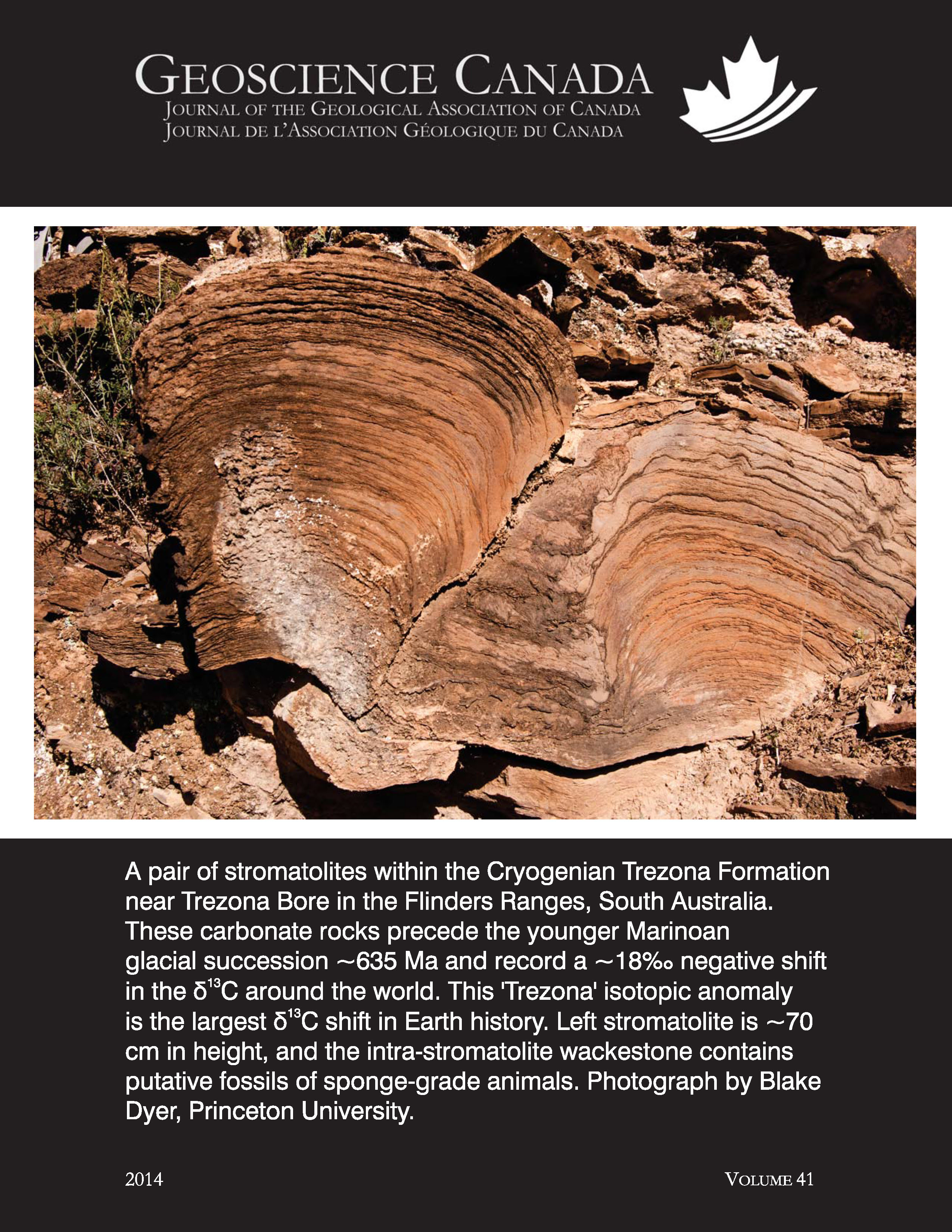Harold Williams Series
The Ayyubid Orogen: An Ophiolite Obduction-Driven Orogen in the Late Cretaceous of the Neo-Tethyan South Margin
Publié-e 2014-05-07
Comment citer
Şengör, A. C., & Stock, J. (2014). The Ayyubid Orogen: An Ophiolite Obduction-Driven Orogen in the Late Cretaceous of the Neo-Tethyan South Margin. Geoscience Canada, 41(2), 225–254. https://doi.org/10.12789/geocanj.2014.41.042
Résumé
A minimum 5000-km long obduction-driven orogeny of medial to late Cretaceous age is located between Cyrenaica in eastern Libya and Oman. It is herein called the Ayyubid Orogen after the Ayyubid Empire that covered much of its territory. The Ayyubid orogen is distinct from other Alpide orogens and has two main parts: a western, mainly germanotype belt and an eastern mainly alpinotype belt. The germanotype belt formed largely as a result of an aborted obduction, whereas the alpinotype part formed as a result of successful and large-scale obduction events that choked a nascent subduction zone. The mainly germanotype part coincides with Erich Krenkel's Syrian Arc (Syrischer Bogen) and the alpinotype part with Ricou's Peri-Arabian Ophiolitic Crescent (Croissant Ophiolitique péri-Arabe). These belts formed as a consequence of the interaction of one of the now-vanished Tethyan plates and Afro-Arabia. The Africa-Eurasia relative motion has influenced the orogen's evolution, but was not the main causative agent. Similar large and complex obduction-driven orogens similar to the Ayyubids may exist along the Ordovician Newfoundland/Scotland margin of the Caledonides and along the Ordovician European margin of the Uralides.SOMMAIRE
Entre la Cyrénaïque dans l'est de la Libye et Oman, se trouve un ceinture orogénique d’au moins 5 000 km de longueur créé par obduction au Crétacé moyen et tardif. Nous le nommons ici l’orogène ayyoubide d’après l'empire ayyoubide qui couvrait une grande partie de son territoire. L'orogène ayyoubide qui est distincte des autres orogènes alpides, comporte deux parties principales : une bande occidentale, principalement germanotype, et une bande orientale principalement alpinotype. La bande germanotype s’est formée en grande partie à la suite d'une obduction avortée, tandis que la partie alpinotype s’est formée par des épisodes d’obduction à grande échelle qui ont étranglé une zone de subduction naissante. La partie principalement germanotype coïncide avec l’arc syrien d’Erich Krenkel (Syrischer Bogen), alors que la partie alpinotype correspond au croissant ophiolitique péri-Arabe de Ricou (Croissant ophiolitique péri-Arabe). Ces bandes se sont formées par l'interaction de l'une des plaques de la Téthys, maintenant disparues, avec l’Afro-Arabie. Le mouvement relatif Afrique-Eurasie a influencé l'évolution de l'orogène, mais ça n’a pas été le principal facteur. Des orogènes grandes et complexes résultant de mécanismes d’obduction similaires à l’orogène Ayyoubide peuvent exister le long de la marge des Calédonides de l'Ordovicien de Terre-Neuve/Écosse et le long de la marge européenne des Uralides de l'Ordovicien.
